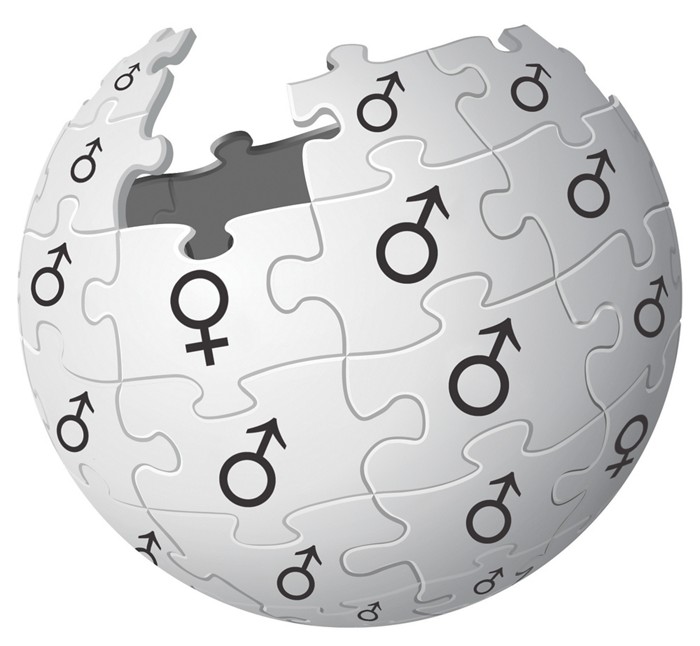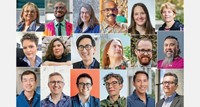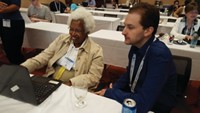Advertisement
Grab your lab coat. Let's get started
Welcome!
Welcome!
Create an account below to get 6 C&EN articles per month, receive newsletters and more - all free.
It seems this is your first time logging in online. Please enter the following information to continue.
As an ACS member you automatically get access to this site. All we need is few more details to create your reading experience.
Not you? Sign in with a different account.
Not you? Sign in with a different account.
ERROR 1
ERROR 1
ERROR 2
ERROR 2
ERROR 2
ERROR 2
ERROR 2
Password and Confirm password must match.
If you have an ACS member number, please enter it here so we can link this account to your membership. (optional)
ERROR 2
ACS values your privacy. By submitting your information, you are gaining access to C&EN and subscribing to our weekly newsletter. We use the information you provide to make your reading experience better, and we will never sell your data to third party members.
Women In Science
Amazing Women
Where are Wikipedia’s women scientists?
Efforts to create a more balanced picture of chemistry on the online encyclopedia are gathering steam
by Katharine Sanderson, special to C&EN
September 16, 2018
| A version of this story appeared in
Volume 96, Issue 37

Between 7 and 11% of prominent chemists, both living and dead, are women. That’s according to the worldview represented on Wikipedia, anyway.
Compared with employment and degree statistics for chemists today, these figures, extracted from the online encyclopedia, are low. According to the U.S. National Science Foundation’s National Center for Science & Engineering Statistics, in 2014, about 39% of chemistry Ph.D.s were awarded to women, and in 2015, about 36% of employed chemists in the U.S. were women.
Women chemists by the numbers
7–11%
The percentage of chemists with biographical pages on Wikipedia who are women
Pinning down the exact percentages of Wikipedia biography pages that exist for chemists is not easy. Alice White, Wikimedian in residence at the Wellcome Trust, in London, used two methods to estimate them for C&EN. PetScan, a tool for searching Wikipedia by categories, extracts figures that suggest about 491 out of the 7,265 chemists on Wikipedia are women—although this kind of search relies on Wikipedia editors correctly tagging pages in a “chemistry” category. Wikidata, a database hosted by the Wikimedia Foundation that includes information from Wikipedia and other data sources, gives a slightly rosier picture, White says. According to a Wikidata search, 1,355 of the 13,962 chemists profiled by the online encyclopedia are women.
24%
The percentage of chemists with biographical pages on the Science History Institute (formerly the Chemical Heritage Foundation) website who are women
36%
The percentage of employed U.S. chemists who were women in 2015, according to the U.S. National Science Foundation’s National Center for Science & Engineering Statistics
This underrepresentation doesn’t just apply to chemists on Wikipedia. In total, just 17% of people with biographical pages on Wikipedia are women, a figure that has slowly risen over the past few years, says Alice White, Wikimedian in residence at the Wellcome Trust, in London. Approximately 50% of the world’s 7.6 billion people are women.
Wikipedia is the fifth most-viewed website in the world, averaging more than 18 billion page views per month. Arguing that a gender imbalance on such a prominent source is problematic, a rapidly growing movement is now trying to even things out.
At the forefront of the movement to add more female scientists to Wikipedia is Jessica Wade, a physicist at Imperial College London. Wade has recently attracted much attention from the media for creating hundreds of Wikipedia biography pages for female scientists, both living and dead.
A postdoc at Imperial’s Centre for Plastic Electronics, she appears to have limitless energy to fuel her many and varied projects. Alongside her full-time research into light-emitting polymer thin films, Wade, as of C&EN’s press time, has written 308 biography pages about women scientists on Wikipedia. She also mentors interns in her lab and participates in numerous other outreach activities. “I’m not sure when she sleeps,” White says.
Wade’s mission is to make women scientists, including chemists, more visible on Wikipedia. In addition to taking it upon herself to write biographies, she takes part in wikithons, which are events where people get together specifically to create content for Wikipedia.
Creating a basic biographical page takes about an hour and a half, Wade estimates, adding that she likes to include as many references as possible—at least three or four of them. The more independent references there are, the better, she says, because this provides solid evidence for the subject’s science credentials.
Anyone can sign up to be a Wikipedia editor and build a page, following instructions available on the site. Editors with more experience check the pages, and after some time, if the pages are deemed to be of good quality, new editors can work with less supervision.
When creating biographical pages on Wikipedia, editors must demonstrate that they have no conflicts of interest. This means editors can’t make pages for their friends or colleagues. So often, when Wade makes biographical pages for scientists, those researchers aren’t aware of the activity.
For instance, Malika Jeffries-EL at Boston University discovered her page only when Wade tagged her about it on Twitter. Jeffries-EL’s research focuses on polymer synthesis, and she does a lot of outreach work, particularly for underrepresented communities. Wade wanted to highlight Jeffries-EL because she is a prominent researcher in plastic electronics, Wade’s own field. And Jeffries-EL is also heavily involved in advocacy and outreach, Wade says.
Other chemists that Wade has created pages for found out only when C&EN contacted them for this story. Charlotte Williams, who researches catalysis and materials chemistry at the University of Oxford, was one of them. At first, “I was shocked and a bit nervous of what its content might be,” Williams says. “On reading it, I was pleased at the generally high accuracy of what was written and the effort that Jess must have taken to write this page for me.” Wade says of Williams: “Charlotte Williams was a big name on campus throughout my Ph.D. She’s a multi-award-winning professor and innovator. I can’t think of many people more worthy of a Wikipedia entry.”
Similarly, Zodwa Dlamini, a biochemist at Mangosuthu University of Technology, in South Africa, didn’t know there was a page about her on Wikipedia. “It was wonderful; I really appreciate it,” she says of discovering the page. “Zodwa Dlamini is a champion for South African scientific research,” Wade explains. “Alongside her own experimental studies in molecular oncology, she is a member of several international councils and has served in leadership positions for the South African Medical Research Council. The world needs to know her story.”
Given the historical male dominance of science and higher education, the question about how many women should actually be listed on Wikipedia for the encyclopedia to truly represent female chemists’ contributions is a thorny one.
Claire Murray, a crystallographer at the Diamond Light Source, in the U.K., says that taking those NSF employment statistics as representative, roughly a third of the chemists with biographical pages on Wikipedia should be women. “However, then we have the debate on who is notable, which is where the lines obviously get blurred,” Murray says. “Given how hard women have to work to stay in the profession, I think it is fair to say that a relatively higher percentage of them would be notable.”

But arguing about how many women should be on Wikipedia is missing the point, she adds. “I think it would be great to move away from the percentage thing. It comes with an implication that when we reach a higher percentage of women, our work is done.”
Wade is incredulous that simply because historically women have not been prominent in chemistry that there should be fewer of them on Wikipedia, calling the notion “absurd.” “Women may not have been famous chemists, but they were authors, activists, and research scientists. They didn’t get titles but did a huge amount for society—and keep doing,” she says.
As a historian, the Wellcome Trust’s White also struggles with the assertion that there is a “correct” number of women to be highlighted. “The ratio of women should be higher,” she says. “ ‘How high?’ is a question often used to distract us from actually getting on with making sure they are better represented,” she says. “It’s also about more than just the number of women; it’s how they are represented and networked and ensuring that their contributions are fairly valued.”
White highlights Wikipedia’s “History of Chemistry” page, which names 204 male chemists, four male nonchemists, and four women in total.
“In all of the history of chemistry, if you’re learning your history from this Wikipedia article, there are four women,” White says. And those four? They include Mary the Jewess, Cleopatra the Alchemist, Marie Curie, and Rosalind Franklin.
White also points out that historical articles tend to underplay women’s role in science. The page for benzene, she says, has three paragraphs about the work done by male chemists to try and work out the structure of the aromatic molecule. Yet there is only a single sentence mentioning that Kathleen Lonsdale, a crystallographer, was the person who finally determined benzene’s structure.
These two examples highlight how poorly the women’s pages are connected to other pages via clickable links throughout Wikipedia, White says. And this is the case for the entire encyclopedia, not just in the sciences. White says it’s much harder to “fall down a rabbit hole” by clicking around on Wikipedia and find yourself reading about a female scientist rather than a male one. “It’s about how we tell these stories,” White says. “It’s not just about biography pages. It’s about how these biographies are woven into Wikipedia.”
Concentrating on adding references and links to female scientists throughout Wikipedia would be far simpler and could have just as much impact as writing full biographical entries, White says. “Just by adding a sentence to the page on the history of chemistry, the picture starts to look very different.”
Jeffries-EL, one of Wade’s subjects, says that increasing the visibility of women scientists on a site like Wikipedia is important because it’s the first resource that many young people use when researching topics. “It is well established that having role models that look like themselves can greatly motivate young women to pursue careers in STEM [science, technology, engineering, and mathematics] fields,” she adds. “Since many will never encounter a female scientist in person, these virtual interactions are critical.”
Measuring the impact of the efforts of Wade and others isn’t straightforward. One of Wade’s colleagues at Imperial, Arthur Turrell, a researcher in economics at the Bank of England and a visiting scientist in the university’s physics department, has tried to find out. In an Aug. 25 blog post, he reported calculating that Wade’s pages about female scientists have gathered over 200,000 views since she started creating them in late 2016, which he writes is “simply astonishing.” For reference, the Wikipedia page for Jocelyn Bell Burnell, who discovered pulsars, has had just over 73,000 views in total but was created in 2004.
Advertisement
Inspired by Wade’s work, Rebecca Barnes, a biogeochemist at Colorado College, has built Wikipedia editing into her teaching, requiring that students in her environmental science classes work on biographies of women scientists in their area of study.
Earlier this year, the American Chemical Society, which publishes C&EN, collaborated with the nonprofit foundation Wiki Education to train more ACS members to contribute high-quality chemistry content to Wikipedia. One of ACS’s first three cohorts focused specifically on improving the representation of female chemists on Wikipedia, expanding pages for University of Michigan synthetic chemist Melanie Sanford, the late Massachusetts Institute of Technology microbiologist Susan Lindquist, and more. ACS plans to work with the foundation to train additional members in Wikipedia editing this fall.
Nisa Mac Mahon, an expert in gender and education who works at the think tank Shiftbalance, thinks Wade’s approach to increasing gender diversity in the world’s most popular reference source is a good one. “By creating these pages, she is effectively empowering the women she is writing about. And by empowering these women, she is creating better role models for girls who want to become scientists,” Mac Mahon says.
Societal change, Mac Mahon adds, can be brought about in many ways. “However, I do feel that the biggest results come from individuals,” she says. “Changing the laws and legislations is great and needs to be done, but the biggest change needed is within the deep-rooted stereotypes and unconscious bias we all grow up with.”
Katharine Sanderson is a freelance science writer based in France.




Join the conversation
Contact the reporter
Submit a Letter to the Editor for publication
Engage with us on Twitter